How to ace an online video interviewAll About Video Interviews
There are two types of video interviews — live interviews (using Skype, FaceTime, or LiveMessenger) and recorded Question-and-Answer interviews, also called “time-shifted” video interviews.
In a recorded interview, the jobseeker is directed to a website to answer questions on video, using their computer’s webcam. Video interviews provide an apples-to-apples approach to assessing candidates. All applicants are asked the same questions, and the hiring manager can review and rate the responses. These interviews can be easily set up by the company’s HR staff and the recording forwarded to the hiring manager for selection for the next round of interviews.
More common, however, are live video interviews.
In 2012, Robert Half reported in a press release that a survey by OfficeTeam found that 63 percent of HR managers use video technology to conduct job interviews. This was a significant increase from 14 percent who conducted Skype interviews in 2011. Skype usage has increased dramatically in recent years: more than 300 million minutes of video calls are logged every day. An increasing number of those calls are job interviews. In 2018, CNBC reported that job interviews are more commonly conducted by AI robots and included this video to show how AI is changing the way you apply for jobs:
On September 20th, 2018, The Wall Street Journal provided details in an episode of Moving Upstream and included this video to show "how new data science tools are determining who gets hired".
Virtual Interview Preparation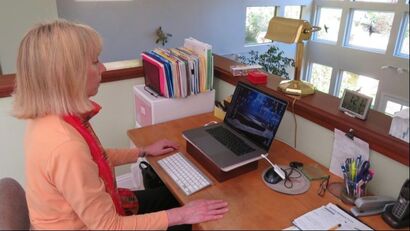 Prepare as if you were sitting across the desk from the interviewer Prepare as if you were sitting across the desk from the interviewer
You can practice a video interview on a computer with a webcam, using the Skype app, or using traditional camera equipment .
Even though online interviews are being conducted by webcam, they are “real” live interviews, and you should be as prepared as if you were sitting across the desk from the interviewer. In fact, you may have to prepare more! After all, you do not have to clean your room before going off to an in-person job interview, but you do need to clear a space for your online interview. In a 2017 article about "How to prepare for a job interview", CNBC reminds us to be carefull about our vocabulary and warns us against our use of "filler words". Each job board also offers its own advice about video interviews.
Also, here is a compilation of various HR professionals and their insights on virtual interviews:
Be mindful of where you set up for your video interview. Be sure the area is free of visual distractions (clutter). Carefully consider what is in the background of your AI interview. Make the background interesting, but not distracting. Plain white walls are fine, but boring. Can you frame a desk or bookshelves behind you instead?
Check out your technology well in advance of the interview. Make sure you have Internet connectivity Make sure your webcam and microphone are working and that your webcam is providing a decent picture. (High definition webcams are available for under $100, if yours is not providing a clear picture.) You may also have to download the software if it is the first time you are using the application. 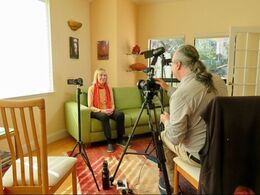 Practice with friends and family Practice with friends and family
One of the best things you can do to prepare for a live video interview is practice. Practice filming a couple of interviews with friends or family members before your job interview. Check the lighting and your volume.
As with a phone interview, recording your practice video interview can help you identify areas to work on, or fix. Have your test partner take a few videos. Be sure to account for any time zone differences before the interview. Video Interview Do's and Don'ts
Review the guidelines for phone interviews, but also keep these “do’s” and “don’ts” in mind.
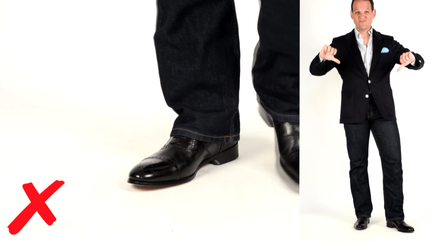 Wrong attire for men by Genetleman's Gazette Wrong attire for men by Genetleman's Gazette
DO:
Dress nicely — more than one jobseeker has scheduled a video interview, thinking it would be voice only — and then accidentally found himself or herself on a video call. Dress from head-to-toe. You may think you do not need to wear dress pants with the shirt and tie since the interviewer is only going to see the top half of your outfit. But you should always expect the unexpected. You never know when you might need to stand during an interview. Pajama pants, jeans, or shorts with a dress shirt, tie, and jacket just do not work. Keep your clothing color choice in mind. Check how the colors of your clothing appear on camera. Just like TV news anchors avoid some colors — and most small patterns, pick colors that will show up well on video. Jewel tones or pastel colors work best. Do not wear white or black. Practice your video interview wearing the exact outfit you are planning to wear. This trial run will also allow you to test the volume of your system, see how the interview software works (if you are not familiar with it), and make sure your lighting is appropriate. 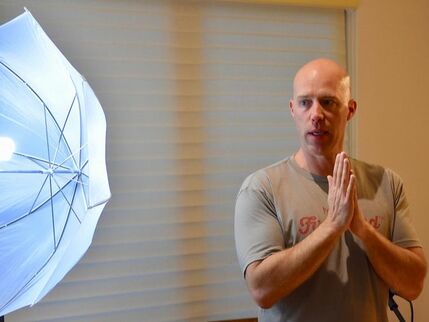 Lighting is very important for video interviews Lighting is very important for video interviews
Lighting is important for virtual interviews. If the light source is behind you, you may appear as a dark silhouette on the screen. Position a lamp or other light source in front of you.
Ensure that your profile photo is professional. This is your first impression from a physical standpoint in a video conference. Positioning is also important. Prop up the computer so that you are not looking down at it and practice where to sit so you are framed correctly by the webcam. Make sure your torso is visible — including your hands — especially if you “talk” with your hands. Look at the webcam when you speak because it will appear to the interviewer that you are looking at them directly.  How to practice for video job interviews How to practice for video job interviews
One “pro” tip is to use a USB-connected headset for an interview instead of using the computer’s speakers. Headsets are inexpensive and can provide a much clearer interview experience. If possible, use a wired Internet connection (plug directly into the Ethernet port) instead of using a wireless connection. If you are using a laptop for the online interview session, plug it in so you have plenty of “juice” (battery life) for the call. You do not want to have to dig for a cord to keep the computer from shutting down. Turn off notifications on your computer and close your other software programs. You do not want to be distracted by beeps every time you receive an email. Speaking of distractions, it is easy to tell on a video interview if you are not paying attention, so keep your focus on the interviewer. Dial up the enthusiasm! Someone who speaks with normal energy in a one-on-one conversation can come across as flat and monotone on a video interview. So it is important to be a little more enthusiastic in a virtual interview than in-person. Smiling is an important strategy for video interviews. Most of the time, when we are listening to someone else, we have a blank expression on our face. But on a video interview, a blank expression comes across as a frown. Keep a slight smile on your face: not a huge grin, just show a few teeth and raise your cheeks slightly. Practice this in a mirror ahead of time. Lean in. You have probably heard that “the camera adds 10 pounds.” The reason for this is that many people lean backwards in their chair, when they should be leaning forward. If you sit back and relax in your chair your head will be further away from the webcam than your stomach. Unfortunately, the camera latches on to whatever is closest…your gut! For women, pay careful attention to your hair and makeup in video interviews. Again, a practice interview session can help you assess this. You may even hire Interview Coaching services. Be mindful of your habits. Just like in a face-to-face interview, the interviewer will notice when you twirl your hair or chew your lip. You can take notes during an online interview, but do not take too many, or you will come off looking distracted. Take notes with a pen and paper, not on your computer. If you have an online portfolio, keep the link handy. You may want to share it with your interviewer.
DO NOT:
What to do at the end of the interview
As with an in-person interview, be sure to inquire about what the next step will be. And write a handwritten thank you note or email as soon as you are off the call.
Job seekers often ask about when to follow up after interview. Follow-up is key after a phone or video interview. Research indicates that employers are less likely to keep jobseekers up-to-date about their prospects with the company after a phone interview than with an in-person interview.
Checklist for a virtual interview
► ► BE ORGANIZED ◄◄
 ►► Be organized ◄◄ ►► Be organized ◄◄
|
Categories
All
powered by Surfing Waves
AuthorMandy Fard is a Certified Professional Resume Writer (CPRW, CMRW) and Recruiter with decades of experience in assisting job seekers, working directly with employers in multiple industries, and writing proven-effective resumes. Archives
July 2024
|
-
Greater Los Angeles
and Kern County
-
[email protected]
.


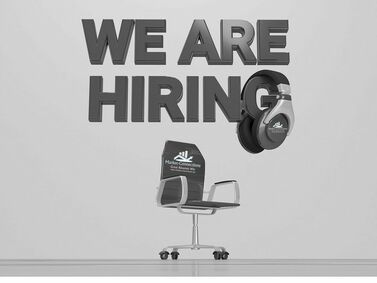
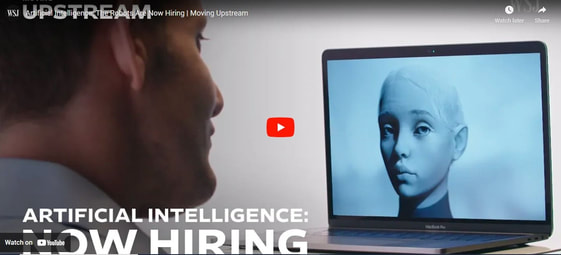

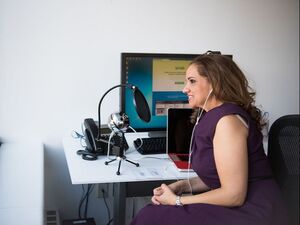




 RSS Feed
RSS Feed



